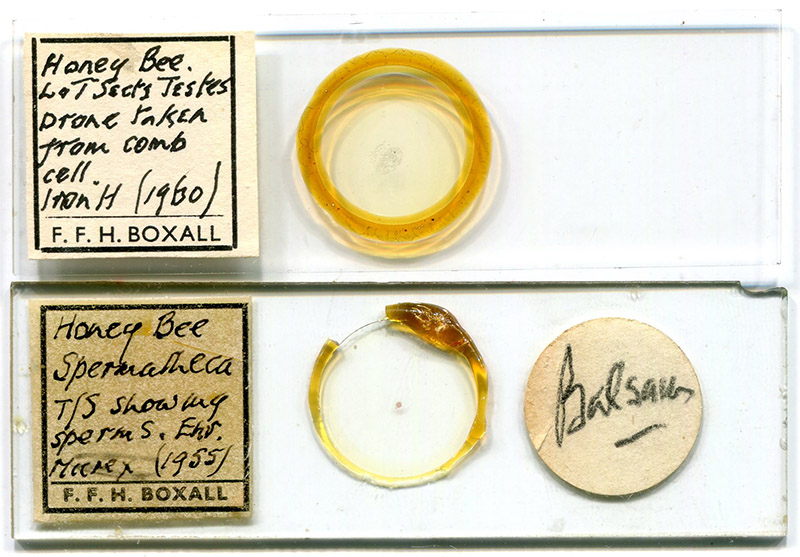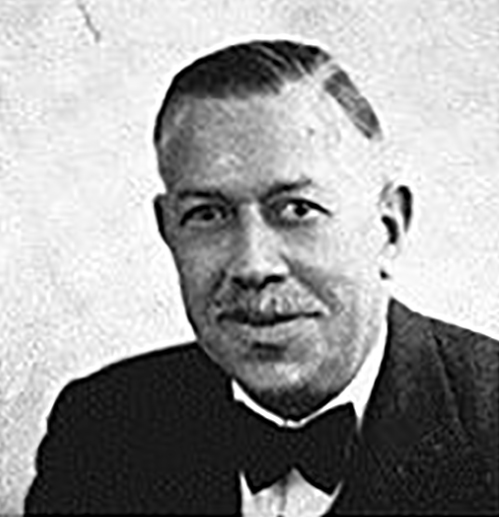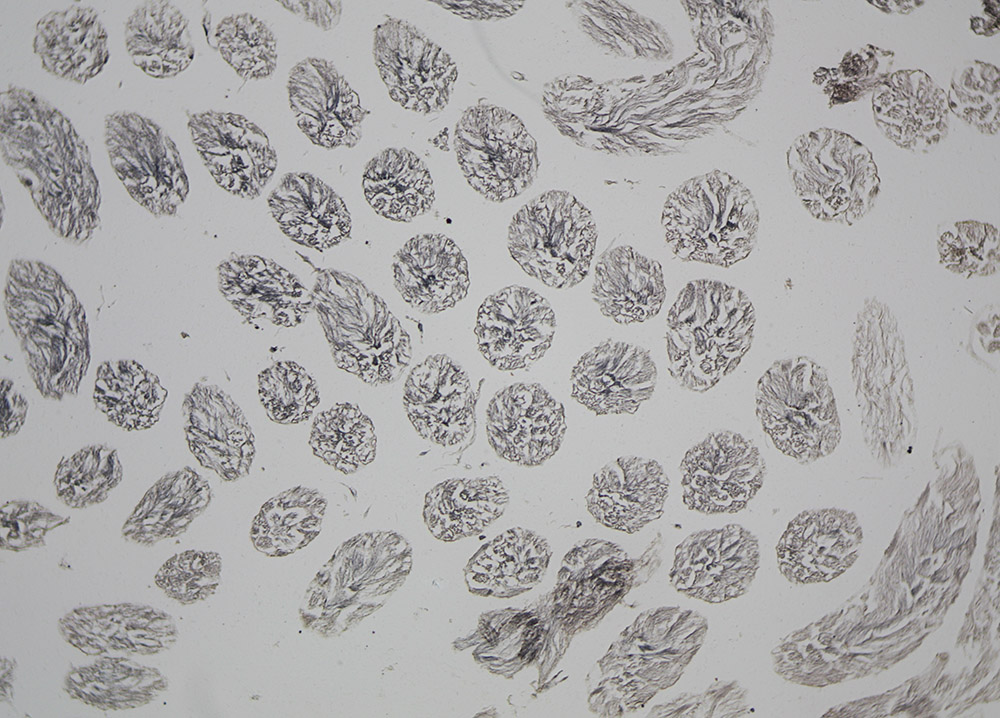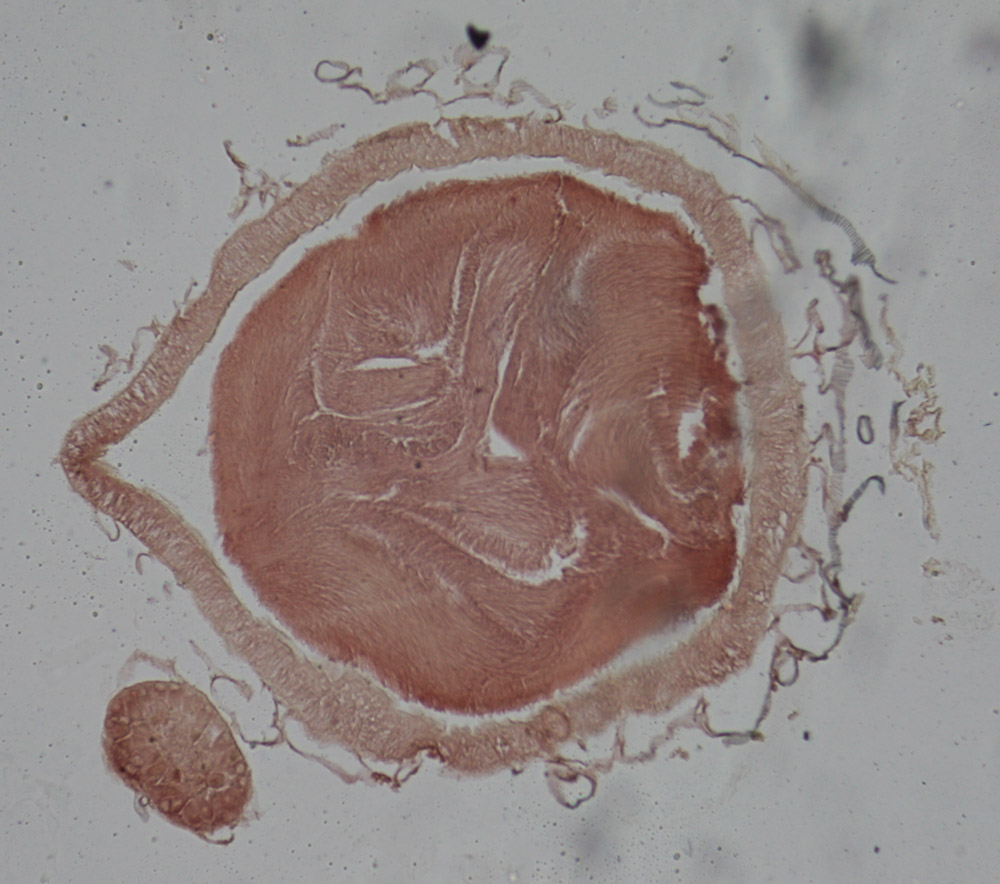
Figure 1. Two microscope slides that were made by Frank Boxall, in 1960 (top) and 1955 (bottom). Both are tissues from honey bees.
Frank Frederick Henry Boxall, 1900 - 1964
by Brian Stevenson
last updated August, 2023
F.F.H. Boxall was an amateur microscopist and bee enthusiast. He joined the Quekett Microscopical Club in 1951. Many of his high-quality microscope slides are related to bees (Figure 1), although preparations of botanical and other subjects are known. He was well-regarded as an expert on sectioning and mounting paraffin-embedded tissues.

Figure 1.
Two microscope slides that were made by Frank Boxall, in 1960 (top) and 1955 (bottom). Both are tissues from honey bees.

Figure 2.
Frank Boxall, from his 1964 memorial in the "Journal of the Quekett Microscopical Club".
Frank Frederick Henry Boxall was born on December 8, 1900 in Acton, Middlesex. He was the elder child of Frederick and Sarah Boxall. Father Frederick was a foreman for a building business.
Frank Boxall worked for most, if not all, of his life with the UK Air Ministry, in the Civil Air Division. In 1939, he and wife Ava lived in Bristol. By 1943, he was back in the London area, working as an Acting Staff Officer for the Directorate of Overseas Civil Aviation.
In 1948, Boxall was awarded Member of the British Empire. He was then Senior Executive Officer of the Ministry of Civil Aviation.
Boxall joined the QMC on November 13, 1951. Upon his death, in 1964, the Journal of the Quekett Microscopical Club published this memorial, written by colleague Edward Herlihy:
“Frank Boxall was a Civil Servant and as such attended several protracted international conferences on Airworthiness in the United States and Canada; he thus became acquainted with a number of men whose names are now familiar in the world of aviation. For this work, he was decorated in 1948. Then, from 1950 he was associated with the development of the financial and administrative organization of the London Airports, from which post he retired in 1961, with the rank of Chief Executive Officer.
"He had great plans for his retirement but, unfortunately, illness developed within a few weeks and it soon became evident that he was bearing up under considerable strain. Nevertheless, he attended Club meetings whenever he could and as late as last autumn, it looked as if he might again be a regular exhibitor at Gossip meetings. His condition deteriorated, however, and died of a blood condition in April (note: April 25, 1964).
"He joined the Club in November, 1951, and from the beginning took an interest in paraffin techniques for section cutting, and in bee anatomy. He was a bee-keeper, more interested in the bees than the honey and, by attending Mr. Dade’s classes, he gradually improved his knowledge and skill, until he became recognized as an expert on sectioning and the diagnosis of bee diseases.
"He was ingenious and competent in mechanical work and he devised and constructed an all-enclosed microscope, which bore an interesting resemblance to the McArthur models; it is referred to at page 28 of the current volume of the Journal. (From the minutes of the October 24, 1961 Gossip meeting: Mr. F.F.H. Boxall exhibited a remarkable contraption resembling a transistor radio set, a sinister ‘black box’, which turned out to be a portable microscope, ingeniously constructed from an assortment of ‘junk’. It demonstrated very successfully one of the creator’s fine paraffin sections, TS bud of Michaelmas daisy.)
"He served the Club well, on the Committee for a number of years and as Business Secretary during 1956 and 1957. He had a friendly personality and was in his element in the Club, where he was a familiar figure for many years.
"He contributed ‘The Preparation of Sections by the Paraffin Wax Method’ to the Journal )Series 4, Volume 4, page 229). At pge 138 of his ‘Anatomy and Dissection of the Honeybee’, 1962, Mr. Dade says “This is by far the best and simplest account of the technique for bee students’.”

Figure 3.
Longitudinal and transverse sections of the testes of a honey bee drone, take from a comb cell, prepared in 1960 by F.F.H. Boxall (see Figure 1). Photographed with a 3.5x objective lens and C-mounted digital SLR camera on a Leitz Ortholux II microscope.

Figure 4.
“Honey bee spermatheca, transverse section, showing sperm”, prepared in 1955 by F.F.H. Boxall (see Figure 1). Photographed with a 3.5x objective lens and C-mounted digital SLR camera on a Leitz Ortholux II microscope.
Resources
Air Ministry – Civil Aviation (1943) https://digital.nls.uk/british-military-lists/archive/96253278
Birthday Honours (1948) Supplement to The London Gazette, page 3378
Boxall, F.F.H. (1956) The preparation of sections by the paraffin wax process, Journal of the Quekett Microscopical Club, Series 4, Vol. 4, pages 229-239
Bracegirdle, Brian (1998) Microscopical Mounts and Mounters, Quekett Microscopical Club, London, pages 17 and 116, Plate 6-R
England census and other records, accessed through ancestry.com
Herlihy, Edward P. (1964) Frank F.H. Boxall, M.B.E., 1900-1964, Journal of the Quekett Microscopical Club, Vol. 29, page 22
Journal of the Quekett Microscopical Club (1961) Minutes of the October 24 Gossip Meeting, Vol. 29, page 28
Journal of the Quekett Microscopical Club (1962) Members: “13.11.51 Boxall F.F.H., M.B.E., 281 St. Margaret’s Road, Twickenham, Middx.”, Vol. 29
Probate of the will of Frank F.H. Boxall (1964) “Boxall Frank Frederick Henry MBE of 281 St. Margarets Road East Twickenham Middlesex died 25 April 1964 at West Middlesex Hospital Isleworth Probate London 28 May to Eva Minnie Boxall widow. £11443”, accessed through ancestry.com